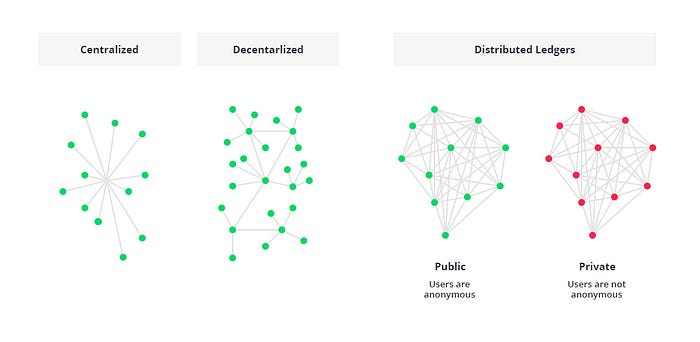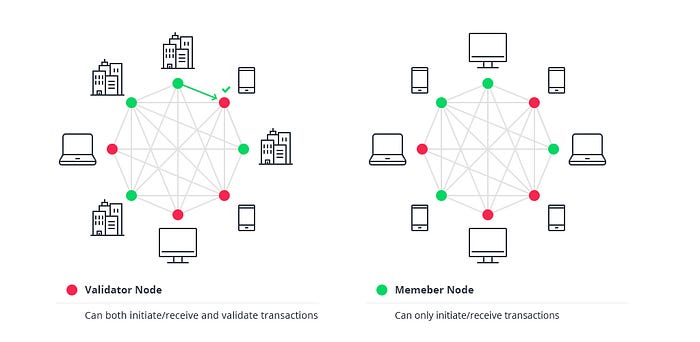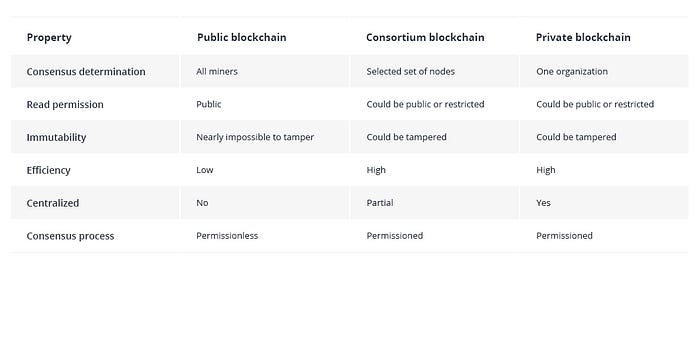Blockchain Architecture Basics: Components, Structure, Benefits & Creation

The term blockchain was first described back in 1991. A group of researchers wanted to create a tool to timestamp digital documents so that they could not be backdated or changed. Further, the technique was adapted and reinvented by Satoshi Nakamoto. In 2008, Nakamoto created the first cryptocurrency, the blockchain-based project called Bitcoin.
What is Blockchain?

The blockchain is a chain of blocks which contain specific information (database), but in a secure and genuine way that is grouped together in a network (peer-to-peer). In other words, blockchain is a combination of computers linked to each other instead of a central server, meaning that the whole network is decentralized.
To make it even simpler, the blockchain concept can be compared to working on the same Google Doc simultaneously.
Database vs. Blockchain System

The traditional architecture of the World Wide Web uses a client-server network. In this case, the server keeps all the required information in one place so that it is easy to update and controlled by a number of administrators.
In the case of the distributed blockchain network, each participant within the network maintains, approves, and updates new entries.
The structure of blockchain technology is represented by a list of blocks with transactions in a particular order. Two vital data structures used in blockchain include:
- Pointers — variables that keep information about the location of another variable
- Linked lists — a sequence of blocks where each block has specific data and links to the following block with the help of a pointer

Basically, the following blockchain sequence diagram is a connected list of records.

Blockchain can serve the following purposes for organizations and enterprises:
- Cost reduction
- History of data
- Data validity & security
Types of Blockchain Explained

All blockchain structures fall into three categories:
- Public blockchain
- Private blockchain
- Consortium blockchain
The following table provides a detailed comparison among these three blockchain systems.

Core Components of Blockchain: How Does It Work
These are the core blockchain architecture components:
- Node — user or computer within the blockchain
- Transaction — smallest building block of a blockchain system
- Block — a data structure used for keeping a set of transactions which is distributed to all nodes in the network
- Chain — a sequence of blocks in a specific order
- Miners — specific nodes which perform the block verification process
- Consensus— a set of rules and arrangements to carry out blockchain operations
The following is a blockchain diagram that shows how this actually works in the form of a digital wallet.

Let’s have a closer look at what is a block in a blockchain. Each blockchain block consists of:
- certain data
- the hash of the block
- the hash from the previous block
On the other hand, in theory, it could be possible to adjust all the blocks with the help of strong computer processors. However, there is a solution that eliminates this possibility called proof-of-work. This allows a user to slow down the process of creation of new blocks.
How to Make a Private Blockchain
A decentralized blockchain application is designed just the same as any other normal software product. Functional specification, UX/UI designs, and an architecture plan are required for its development. It is crucial to identify the app’s functionality, user roles, and think over the system flow and the interaction between users and information.
In order to build your own blockchain, it is necessary to consider:
- Blockchain network — refers to the application’s infrastructure placed within a particular environment inside one, or a few, organizations.
- Blockchain code — refers to the tasks and goals this blockchain solution has been developed to perform.
There are a few open-source solutions used to build a private blockchain architecture. The most popular among them is Hyperledger by Linux Foundation. This project is also widely used by IBM and other famous tech organizations. Hyperledger Composer provides a set of tools for building blockchain.
Some other solutions to build your own blockchain with are Ethereum and Corda.
Here is a high-level hyperledger architecture diagram to create a blockchain solution.

Key Characteristics of Blockchain
Blockchain possesses a lot of benefits for businesses. Here are several embedded characteristics:
- Cryptography
- Immutability
- Provenance
- Decentralization
- Anonymity
- Transparency
Create Your Own Blockchain!
Blockchain technology enables organizations & companies in the following ways:
- Possibility to complete transactions much more quickly and with trust
- Cost reduction for businesses or cross-enterprise processes while removing intermediaries, inefficiencies, and duplications
- Introduction of modern digital interaction
- Opportunity to keep detailed control over business processes and transactions without a central control point
- Remove cheating, cyber attacks, or other electronic crimes
In case you have an interesting idea for using blockchain architecture, contact our team. We can help you implement a blockchain solution in the best manner.
This is a brief summary of an article published on MLSDev blog. If you would like to learn more about the blockchain, read the full article.
